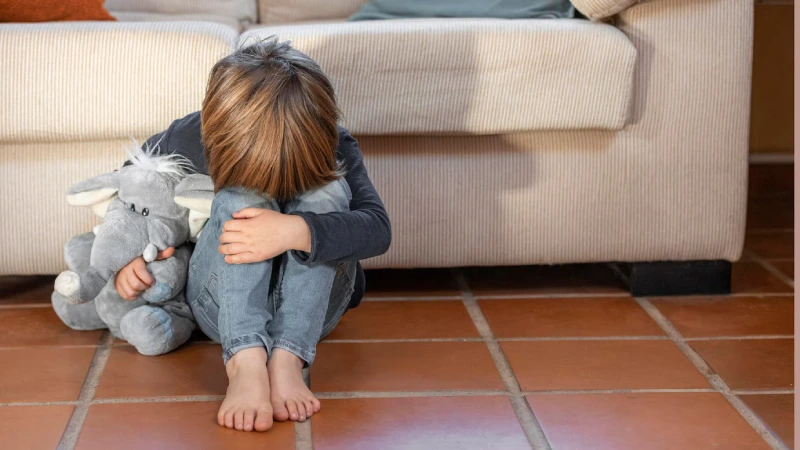
10 Examples of Bad Parenting and How to Break the Cycle
Parenting is often referred to as the most important job in the world yet it’s also a job that comes without a clear, universal guidebook. Every parent does the best they can with the resources they have. Nevertheless, certain patterns of behavior, often borne out of stress, personal history, or misinformation, can lead us down a path of “bad parenting.” Though it may sound harsh, “bad parenting” does not necessarily mean that a parent is a bad person. Instead, it can describe ongoing harmful habits or parenting styles that negatively affect a child’s emotional, mental, and even physical well-being. Recognizing these patterns and taking steps to break the cycle is not only possible but can also profoundly strengthen the parent-child relationship.
The good news is that awareness is the first step. Identifying unhelpful parenting behaviors help empower ourselves to develop healthier strategies. In this article, we’ll discuss ten common examples of “bad parenting” and explore ways to replace them with more constructive practices.
1. Over-criticism

What It Looks Like
When parents are overly critical, they tend to focus more on what their children are doing wrong than on what they’re doing right. This constant stream of criticism might be about anything and everything from schoolwork, sports performance, physical appearance, or even a child’s choice of friends. The child then grows up feeling like they can never measure up to expectations. Over time, chronic criticism can chip away at a child’s self-esteem and self-confidence, making them more prone to anxiety, depression, and feelings of inadequacy.
Often, over-criticism stems from the parent’s desire for their child to excel and succeed. The parent may believe that being extremely vigilant and pointing out every mistake will inspire improvement. In reality, it usually has the opposite effect. Children may become resentful, withdrawn, or overly self-critical themselves.
How to Break the Cycle
Instead of highlighting every flaw, make a conscious effort to catch your child doing things right. Acknowledge their strengths and celebrate their efforts, even when the outcomes are imperfect. Be specific in your praise, rather than saying “good job,” say, “I appreciate the way you took your time to study for your test,” or “I love how you supported your friend today.”
Remember that positive reinforcement is more effective than criticism in encouraging desired behaviors. Constructive feedback, rather than relentless criticism, helps a child feel supported and motivated to keep improving. It’s also beneficial to reflect on why you feel the need to critique. Is it a form of unresolved anxiety about your own performance? Is it a pressure you experienced in your own childhood? Recognizing these roots can help you replace unhealthy criticism with guidance and encouragement.
2. Overprotection

What It Looks Like
While being protective is natural, being overprotective can stifle a child’s development. Overprotective parents often hover, micromanage, and control every little aspect of their children’s lives. They may intervene in school arguments, choose their child’s friends, or discourage them from trying any new activities that carry even the slightest risk of failure or injury. These behaviours might lead to your child feeling suffocated and miss out on crucial life skills like leadership and social skills. Such children might grow up fearful of exploring the world independently. They may struggle with low resilience, heightened anxiety, and limited problem-solving skills.
Overprotection usually arises from a place of love. A parent might have experienced hardships themselves and wants to spare their child from similar pain. However, children learn resilience by making their own mistakes and discovering their own solutions. Letting your child fall sometimes is the only way to teach them how to get back up and take care of themselves.
How to Break the Cycle
A healthier approach involves balanced guidance, step in to protect your child from truly dangerous situations, but also allow them room to take calculated risks. Encourage independence by giving them age-appropriate responsibilities, such as letting them plan a meal or manage some pocket money. When they stumble, be there to offer emotional support and help them reflect on what happened and how they can handle the situation differently next time.
It can be tough to let go if your own upbringing was hyper-vigilant or if you’re processing fears from your personal history. However, practicing small steps like letting them walk to a friend’s house or encouraging them to solve small conflicts on their own can help both you and your child grow in confidence.
3. Emotional Neglect

What It Looks Like
Emotional neglect can be subtle but highly damaging. It involves a lack of emotional support, closeness, and responsiveness to a child’s needs. Parents who are emotionally neglectful might be physically present for feeding, clothing, and housing their child but remain distant or dismissive of their child’s inner world. Children raised in such environments often feel invisible, unheard, and unworthy of love and attention.
Sometimes, emotional neglect might stem from a parent’s busy schedule or personal struggles with mental health. Other times, it’s simply a lack of understanding of how crucial emotional support is to a child’s well-being.
How to Break the Cycle
Start by making time to connect with your child on a daily basis, even if it’s just for a few minutes. Ask them open-ended questions about their day and show genuine interest in what they have to say. Practice active listening, maintain eye contact, nod, and respond in a way that shows you understand.
Offering reassurance and empathy is vital while interacting with your youngling. When your child expresses strong feelings, be it fear, anger, or sadness, don’t dismiss them with phrases like “You’re fine, stop crying.” Instead, acknowledge those emotions by reassuring that you’re there for them with, “It sounds like you’re really upset. Let’s talk about it.” This simple shift in approach can make your child feel validated and loved.
4. Using Fear as a Disciplinary Tool

What It Looks Like
Some parents resort to intimidation, yelling, or even physical punishment to keep their children in line. This approach might bring about short-term compliance as few children want to endure the terrifying experience of parental rage to impress or comply with their parents but it often has damaging long-term consequences. Fear-based discipline can cause children to associate obedience with anxiety and mistrust. Over time, this can undermine their sense of safety at home, potentially leading to behavioral issues and mental health struggles down the road.
Using fear can also hinder emotional intimacy. When a child is scared of a parent’s reaction, they’re less likely to confide in them about mistakes or challenges. As a result, the child loses a crucial support system during some of their most formative years.
How to Break the Cycle
Shift your focus toward proactive discipline methods like setting clear boundaries, explaining expectations, and using logical or natural consequences. Instead of resorting to threats or physical force, talk with your child about the reasons behind rules and the potential outcomes of certain behaviors. For example, if they don’t complete their homework, the logical consequence might be a lower grade or missing out on free time to finish assignments.
Building a trusting relationship is crucial. Offer empathy even when correcting behavior, and provide consistent, structured guidelines. You’ll help your child develop a strong moral compass, not because they are terrified of you, but because they understand why certain behaviors are right or wrong.
5. Comparing Children to Others

What It Looks Like
Many parents compare siblings or compare their own children to other kids in the neighborhood. You might hear statements like, “Why can’t you be more like your brother?” or “Your cousin always gets straight A’s; why can’t you?” While it might be an attempt to motivate children, these comparisons usually do more harm than good. Constantly being measured against someone else can cause children to feel inferior, jealous, or resentful. It also fosters sibling rivalry and strains family relationships.
Parents often compare out of frustration or fear that their child is falling behind. However, comparing only highlights perceived shortcomings without offering guidance or tools for improvement.
How to Break the Cycle
Focus on your child’s individual strengths and achievements. Celebrate their personal wins, no matter how small, and highlight the progress they’re making relative to themselves, not to others. Instead of saying, “Look how well your sibling did,” try, “You’ve improved so much since last time; just look at the difference in your confidence!”
Be mindful of the language you use. Even casual off-the-cuff comments can register deeply with children. If you’re concerned about their performance or behavior, approach it constructively and discuss goals, strategies, and actionable steps, rather than pitting them against a peer or sibling.
6. Inconsistent and Harsh Punishments

What It Looks Like
Inconsistent discipline occurs when the rules keep changing or are applied unequally depending on the parent’s mood. One day, a minor mistake might be overlooked; the next, it results in a severe punishment. This inconsistency can confuse children, making it hard for them to understand the boundaries or the consequences of their actions. Harsh punishments like excessive grounding, long-term isolation, or extreme chores also fall into this category, as they can breed resentment and fear instead of learning and respect.
Parents might resort to such measures when feeling overwhelmed, stressed, or unsure of how to manage their child’s behaviors. Unfortunately, inconsistency and undue harshness can erode trust in the parent-child relationship.
How to Break the Cycle
Establish clear, consistent guidelines for behavior and agree on reasonable consequences for breaking those rules. Make sure both parents (if applicable) are on the same page and communicate these expectations to your child. Follow through calmly, rather than emotionally. For instance, if a rule states that a missed curfew results in losing gaming privileges for a day, enforce it as stated without adding extra punishments in the heat of the moment.
Seek balanced and proportional consequences. The goal of discipline should be to guide, not to intimidate or shame. If your child is old enough, involve them in setting the rules and consequences.
7. Lack of Empathy

What It Looks Like
Parenting without empathy often manifests as dismissing or belittling a child’s feelings, or failing to see things from the child’s perspective. While parents might focus on imparting discipline, routine, and structure, ignoring a child’s emotional world can leave them feeling misunderstood and invalidated. Over time, this can hamper a child’s emotional intelligence and ability to form healthy relationships.
A lack of empathy might be a result of the parent’s own emotional experiences and struggles. Perhaps they grew up in an environment where emotions were not acknowledged, or they’re dealing with stressors that make it hard to offer the emotional bandwidth their child needs.
How to Break the Cycle
When your child expresses an emotion, reflect it back to them. For example, “You seem really frustrated about losing that game; it’s okay to feel that way. Let’s talk about it.” This simple act of recognizing their emotions can help them feel safe and understood, which in turn can improve communication and trust between you.
You can also practice modeling empathy in everyday scenarios, such as discussing how characters in a story or movie might feel in a certain situation. Integrating more empathy into your daily life makes it easier to understand your child’s perspective and respond to their needs in a loving, supportive manner.
8. Setting Unrealistic Expectations

What It Looks Like
When parents set the bar too high for their children academically, socially, or otherwise, it can create a constant sense of pressure to perform. Children in these situations may become perfectionists who struggle with anxiety or fear of failure. This might prevent them from trying new things and exploring their interest due to their obsession with perfection and fear of failure. They might also come to believe that their worth is solely contingent on achievements.
Unrealistic expectations can stem from a parent’s desire to offer their child opportunities or ensure success in life. Sometimes, it’s also a reflection of the parent’s own missed dreams or insecurities. However, pushing a child into a box they can’t realistically fill can lead to burnout and a strained parent-child relationship.
How to Break the Cycle
Aim to set goals that challenge your child but remain within reach. Focus on supporting them in their endeavors instead of setting goals. Talk openly about what success means to you and more importantly ask your child what success means to them. If your child wants to excel in music, support them with lessons and practice time, but remain mindful of their overall well-being. If they fall short, focus on growth and resilience rather than blame.
Encourage curiosity and passion over pure achievement. Applaud efforts, no matter the outcome. Motivate them to achieve more and reach higher accolades but avoid making it all about the 1st prize. It’s also useful to reflect on your motivations for setting such high standards. Is it due to your own fears of failing as a parent? Is it rooted in competition with other families? Once you understand where these unrealistic expectations come from, you can cultivate a healthier approach that nurtures your child’s unique strengths and aspirations.
9. Projection of Parental Dreams onto Children

What It Looks Like
Projection happens when parents impose their unfulfilled ambitions or desires onto their kids. Perhaps you always wanted to be a professional athlete or doctor, and now you expect your child to fulfill that dream. Over time, the child may feel pressure to succeed in something they don’t genuinely love or want. This can lead to resentment, confusion about their identity, and a strained relationship.
Projection often arises from a parent’s regrets or a deep belief that this path is the “best” route for success or happiness. Even if well-intentioned, such pressures can overshadow a child’s own interests, passions, and talents.
How to Break the Cycle
Encourage exploration of their interests. Provide your child with opportunities to discover various hobbies and academic interests. Watch how they respond and follow their lead. If they show a particular enthusiasm for science or art, provide resources and support in that area without overstepping. Resist the urge to steer them toward the activities you love if it becomes clear they’re not interested. Stay open-minded and regularly check in with your child about their feelings by asking them how they are feeling about their activities.
10. Dismissing a Child’s Emotions

What It Looks Like
Dismissing or minimizing a child’s emotions is slightly different from emotional neglect. It specifically involves downplaying the validity or intensity of what a child is feeling. Comments like, “It’s just a scratch, stop crying,” or “You’ll get over it, it’s not that big of a deal,” can teach children that their feelings are inconsequential or exaggerated. They learn to suppress their emotions or doubt whether they’re allowed to feel them.
Dismissing emotions can come from a lack of patience or an inability to understand why a child might be feeling a certain way. Sometimes, parents want to “toughen up” their kids or believe that acknowledging certain feelings will reinforce them. In truth, suppressing emotions tends to backfire, leading to higher emotional distress in the long run.
How to Break the Cycle
When your child is upset, anxious, or even excited, validate what they’re feeling. You don’t have to agree with their reaction to acknowledge that it’s real for them. For instance, if they’re angry about losing a game, you might say, “I can see how that could be really frustrating. Losing can sting, but it’s okay to feel upset.” Once their feelings are validated, you can move into collaborative problem-solving or reflection.
Model healthy emotional expression by sharing your own feelings in an age-appropriate way “I’m feeling a bit stressed about work today. I think I’m going to take a short break to clear my head.” This teaches your child that all emotions are valid and that there are constructive ways to handle them.
Conclusion
Recognizing and addressing these patterns is key to breaking any harmful cycles of parenting. Each of the behaviors described can have a long-term impact on your child’s self-esteem, mental health, and overall relationship with you. But it’s crucial to remember that recognizing a mistake in your parenting approach does not define you as a “bad parent.” It takes humility, courage, and compassion to acknowledge areas of improvement and learn new strategies.
Above all, remember that parenting is a journey, not a destination. Nobody gets it right 100% of the time. By staying present, open-minded, and willing to learn, you’ll continue to evolve in ways that enrich both your life and the life of your child. The effort you put into breaking these cycles will create a lasting, positive legacy where your children grow up feeling supported, understood, and deeply loved.
In making these changes, you’re not only helping your child but also re-parenting yourself. You’re acknowledging the past patterns you’ve carried and actively choosing a more mindful path. This journey can be transformative, leading to a stronger sense of empathy, resilience, and mutual respect. Ultimately, you’ll be laying a foundation that empowers your children to become confident, empathetic, and emotionally healthy adults. And that’s something every parent can be proud of.





